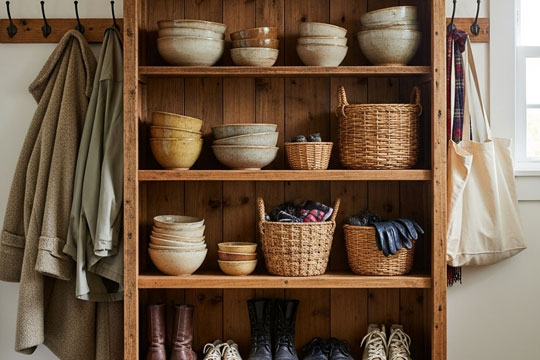Let’s be honest—when was the last time you even thought about your air ducts?
They’re out of sight and out of mind, quietly doing the behind-the-scenes work of keeping your home comfortable year-round. But even though they’re hidden, those ducts play a big role in your indoor air quality and overall comfort.
Think of them as the lungs of your home. And just like you’d clean any vital part of your space, your ducts need some attention, too.
So how often should you actually clean your air ducts? Let’s break it down.

Why Clean Air Ducts Matter
Over time, your ductwork becomes a magnet for dust, dirt, pet hair, pollen, and even mold spores. Every time your system turns on, these particles can get pushed out into your living spaces.
If you’ve noticed a layer of dust settling quickly after cleaning, or allergies flaring up for no clear reason, your air ducts might be the hidden culprit.
Clean ducts don’t just mean cleaner air. They can also help your HVAC system run more efficiently—saving you energy and extending the life of your equipment.
The Short Answer: Every 3 to 5 Years
For most homes, professionals recommend having your air ducts cleaned every 3 to 5 years.
That timeline strikes a good balance between staying ahead of buildup and not overdoing it. But every home is different, and some situations call for more frequent cleaning.
Let’s talk about when you might need to bump up your schedule.
Times You Should Clean More Often
Not everyone fits into the same timeline. In some cases, your ducts may need more regular attention—sometimes every year.
1. After Renovation or Construction
Even small home improvement projects can stir up a surprising amount of dust and debris. And that dust? It doesn’t stay in one place.
If you’ve recently remodeled, updated flooring, or had drywall work done, it’s a smart move to have your ducts cleaned once the work is complete.
2. If You Have Pets
As much as we love our furry friends, they bring dander, hair, and dust into the home—and it all makes its way into your ducts over time.
If you have multiple pets or heavy shedders, consider cleaning your ducts every 2 to 3 years, or even yearly if anyone in the house has allergies.
3. When Someone Has Allergies or Asthma
If clean air is a health priority in your household, your ductwork should be too.
Dust, mold spores, and other irritants can collect and circulate in your system. A professional cleaning can help reduce symptoms and create a safer space to breathe.
4. When You Move Into a New Home
Unless you’re the first person to live there, you’re probably inheriting whatever dust and dirt the previous owners left behind.
A thorough duct cleaning is a great way to hit the reset button and make the space feel fresh from the inside out.
5. If You Notice a Musty Smell or See Mold
Musty odors or visible mold around vents should never be ignored.
Not only is mold a health hazard, but it’s also a sign of moisture problems in your system. A professional cleaning can help identify the issue and keep it from spreading.

Signs Your Ducts Need Cleaning
Not sure when it’s time? Here are some telltale signs that your ducts might need attention:
- Dust collecting around vents
- Weak airflow in certain rooms
- Allergy or asthma flare-ups indoors
- Unpleasant or musty smells when the system is on
- Visible debris or mold inside the ductwork
- Insect shells or rodent droppings near vents
If you’re noticing more than one of these, it’s probably time to schedule a cleaning.
What Happens During a Duct Cleaning?
Professional duct cleaning is more than just vacuuming a few vents.
Technicians use specialized equipment—like high-powered vacuums, rotating brushes, and compressed air tools—to reach deep inside the system and remove buildup.
They may also inspect the system for damage or mold. Depending on the size of your home, the cleaning process typically takes around 2 to 4 hours.
Can You Clean Air Ducts Yourself?
You can handle light upkeep, like changing filters and vacuuming vent covers. And that’s great maintenance!
But a deep, full-system duct cleaning? That’s best left to professionals with the right tools and training. Most of your ductwork isn’t easily accessible, and DIY attempts can damage it or make things worse.
Think of it like cleaning your car’s air filter—doable at home. But rebuilding the engine? You’d probably call a mechanic.

The Power of Clean Filters
If you want to stretch the time between duct cleanings, change your air filters regularly—ideally every 1 to 3 months.
Clean filters trap dust and allergens before they can make it into your system. They also keep your HVAC system running smoothly, which saves energy and money in the long run.
It’s a small step with a big payoff.
What Does It Cost?
The average cost for a full professional duct cleaning runs between $300 and $600, depending on your home’s size and layout.
While it’s not pocket change, consider the benefits: cleaner air, improved airflow, fewer allergens, and a more efficient system.
Just be cautious of super-low offers—those “$99 whole-house specials” often come with hidden fees or rushed service.
Choosing the Right Pro
If you’re hiring someone, make sure they’re certified by the National Air Duct Cleaners Association (NADCA). This ensures they follow strict standards and best practices.
Read reviews, ask for a quote up front, and make sure they explain what’s included. A reputable provider will walk you through the process, not pressure you into extras.
So, How Often Should You Clean Your Ducts?
Here’s your cheat sheet:
- Every 3–5 years for most homes
- Every 1–3 years if you have pets, allergies, or asthma
- Right away after construction or if you see mold
And always trust your instincts—if your home feels dusty or your nose is constantly itchy indoors, it might be time to call in the pros.
Final Thoughts
Your air ducts may not be visible, but they impact every breath you take inside your home.
By keeping them clean, you’re not just maintaining your HVAC system—you’re creating a healthier, fresher, and more comfortable space to live in.
So the next time you’re doing your seasonal home check-up, give your ducts a little thought. Your lungs (and your vacuum cleaner) will thank you.
Check for dust on vents, allergy symptoms, odd smells, or weak airflow. If it’s been over five years, go ahead and schedule one.
Yes. They can trigger allergy symptoms, worsen asthma, and circulate mold spores or dust mites through the house.
Spring and fall are ideal—right before your HVAC system goes into overdrive for summer or winter.

